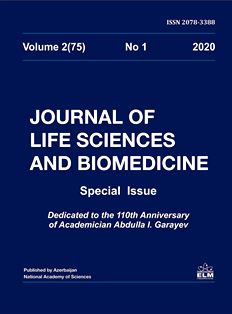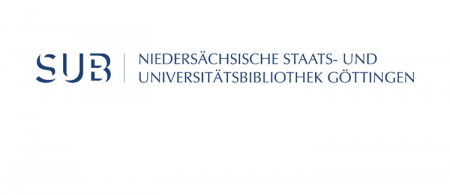
Complex diagnostic methods for non-tumoral pathologies of gastro- esophageal junction (mini review)
Research article: Complex diagnostic methods for non-tumoral pathologies of gastro- esophageal junction (mini review)
Authors: R.I. Gafarov1*, K.R. Yusif-zadeh1, S.S. Manafov2
1 State Border Service Military Hospital, 99 F.Khoyski, Baku AZ1072, Azerbaijan;
2 Scientific Center of Surgery named after Mustafa Topchubashov, 196 Abbas Mirze Sharifzadeh Str., Baku AZ 1122, Azerbaijan
* For correspondence: dr.ramil.gafarov@gmail.com
Accepted for publication: 10 April 2020
Abstract:
According to the literature, there is a significant increase in esophageal pathologies in developed countries, which reduces the life quality and working abilities of patients. Timely and correct diagnosis of non-tumor abnormalities of the gastro-esophageal junction is one of the main factors influencing the quality of treatment and the recovery of the patients.
Keywords: Gastroesophageal junction, GERD, hiatal hernia, gastroesophageal reflux
References
A. M. Akhmatov, I. S. Tarabaev, and D. I. Vasilevsky, Russ. (2018) History of the development of hiatal hernia surgery. Pediatrics, dp. 3:77-79.
Balagansky D.A., Koshel A.P., Vrublevskaya M.L. (2011) Possibilities of transabdominal ultrasonography in the diagnosis of gastroesophageal reflux disease in children. Bulletin of Siberian Medicine, No. 3: 111-115.
Veligotsky I.I., Gorbulich A.V. (2007) Pathophystological aspects of functional disorders of the esophageal-gastric junction. International Medical Journal, no. 1: 71-79.
Volchkova I.S., Ospanov O.B. (2011) Surgical aspects of GERD treatment: indications for surgery and results of various types of laparoscopic fundoplications. Medical Science and Education of the Urals, 12(4): 126-128.
Dronova O.B., Tretyakov A.A., Kagan I.I. et al. (2016) Gastroesophageal reflux disease: Issues of pathogenesis and diagnosis. Orenburg Medical Bulletin, IV(4): 57-62.
Zhurbenko G.A., Karpitsky A.S., Panko S.V., Shestyuk A.M. (2015) Computed tomography of the chest in patients with a sliding hiatal hernia. Thoracic and Cardiovascular Surgery, 57(1): 36-42.
Zatevakhina I.I., Kirienko A.I., Kubyshkina V.A. (2016) Abdominal surgery. National Guidelines: Concise Edition. M.: GEOTAR-Media, 912 p.
Zyabreva I.A., Dzhulai T.E. (2015) Hiatus hernia: controversial, unresolved and promising aspects of the problem (literature review). Upper Volga Medical Journal, 14(vol. 4): 24-28.
Kalinina E.A., Pryakhin A.N. (2014) Technical aspects of laparoscopic repair of hiatal hernias: literature review and own experience. Bulletin of the South Ural State University. Series "Education, health care, physical culture", 14(3): 54-60.
Levin M.D., Korshun Z., Mendelson G. (2013) Pathological physiology of gastroesophageal reflux disease. Hypothesis (literature review). Experimental and Clinical Gastroenterology, no. 5: 72-88.
Levin M.D., Mendelson G. (2015) Shchatsky ring as a symptom of gastroesophageal reflux disease. Bulletin of Roentgenology and Radiology, No. 1: 5-15.
Mozharovsky V.V., Tsyganov A.A., Mozharovsky K.V., Tarasov A.A. (2017) Evaluation of the effectiveness of surgical treatment of gastroesophageal reflux disease in combination with hiatal hernia. Surgery, 6: pp. 28-32.
Mhammad M.M.. Orozbekova B.T. (2017) Gastroesophageal reflux disease and features of epidemiology (literature review). Trends in the development of science and education, No. 30-1: 34-40.
Semenyakina I.V., Dibirov M.D., Erin S.A. et al. (2017) Clinical and instrumental features of the diagnosis of hiatal hernia. Moscow Surgical Journal, No. 2: 30-37.
Turanov N.L., Lamekina Ya.A., Zinchenko S.A. et al. (2010) X-ray diagnostics of gastroesophageal reflux disease and its complications. Bulletin of St. Petersburg University, vol. 2:195-207.
Shestakovich E.N. (2015) Variant anatomy of the abdominal part of the adult esophagus using modern research methods. International Scientific and Practical conference “World Science”, 2(3): 32-34.
Shishko V.I., Petrulevich Yu.Ya. (2015) Gastroesophageal reflux disease: anatomical and physiological features of the esophagus, risk factors and mechanisms of development (literature review, part 1). Journal of Grodno Medical University, No. 1: 19-25.
Akyüz F., Soyer O.M. (2017) How is gastroesophageal reflux disease classified? Turkish J.Gastroenterology, 28 (suppl 1): 10-11.
Aliotta A., Rapaccini G.L., Pompili M. et al. (1995) Ultrasonographic signs of sliding gastric hiatal hernia and their prospective evaluation. Journal of Ultrasound in Medicine, 14(6): 457-461.
Barone M., Dilernia P., Carbonara M. et al. (2006) Sliding gastric hiatal hernia diagnosis by transabdominal ultrasonography: an easy, reliable and non-invasive procedure. scand. J. Gastro-enterol., 41(7): 851-855.
Chenxi X., Yuwen L., Zhang N. et al.(2017) Gastroesophageal flap valve reflected EGJ morphology and correlated to acid reflux. BMC Gastroenterology, 17:118.
Hopkins J., Switzer N.J., Karmali S. (2015) Up-date on novel endoscopic therapies to treat gastroesophageal reflux disease: A review. World J. Gastrointest. Endosc., 7(11): 1039-1044.
Pawluszewicz P., Wojciak P., Diemieszczyk I. et al. (2018)Hiatal hernia – epidemiology, path-hogenesis, diagnostic. post. N. Med., XXXI (5): 274-278.
Serhat B., Yuksel E.S. (2017) How is the prevalence, incidence and frequency of complications (stricture/esophagitis/Bar-rett/carcinoma) of gastroesophageal reflux disease compared with different geographical regions of the world? Turkish. J. Gastroenterol., 28 (Suppl 1): S4-S9
Westra S.J., Wolf B.H., Staalman C.R. (1990) Ultrasound diagnosis of gastroesophageal reflux and hiatal hernia in infants and young children. J.Clinic ultrasound, V.18(6), p.477-485.
Bilgi Z., Batırel H.F. (2013) Hiatal hernias. Bulletin of Thoracic Surgery, №2: 253-258.























